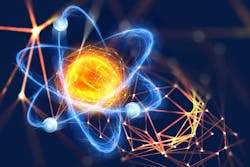DLR demonstrates atomic diffraction through solids to advance radiation-resistant space electronics
COLOGNE, Germany - Researchers at the German Aerospace Center (Deutsches Zentrum für Luft- und Raumfahrt; DLR) have succeeded for the first time in diffracting a beam of atoms through a solid. So far, this has only been possible with electrons or neutrons. The principle takes advantage of the fact that atoms can behave like waves – in a similar manner to water waves encountering an obstacle, matter waves form a characteristic pattern when they encounter an atomic lattice structure, the German Aerospace Center reports. Continue reading original article.
The Military & Aerospace Electronics take:
22 August 2025 - Researchers at the German Aerospace Center (DLR) have, for the first time, diffracted a beam of atoms through a solid, a step that could aid the development of radiation-resistant materials for spacecraft electronics.
By sending hydrogen and helium atoms at high speed through an atom-thin graphene membrane, scientists revealed their wave-like behavior, creating diffraction patterns that can be used to study material structures.
Because atom beams are electrically neutral, they interact less destructively than electrons, making them useful for examining radiation-sensitive materials. The method could help design longer-lasting electronic components for satellites and spacecraft exposed to solar wind and cosmic radiation.
The work also supports research into ultra-thin 2D materials such as graphene, which show promise for miniaturized electronics and quantum sensors in space applications.
Related: The future of crewed and uncrewed space flight
Related: ISS National Lab names six startups for inaugural Orbital Edge Accelerator program
Jamie Whitney, Senior Editor
Military + Aerospace Electronics
